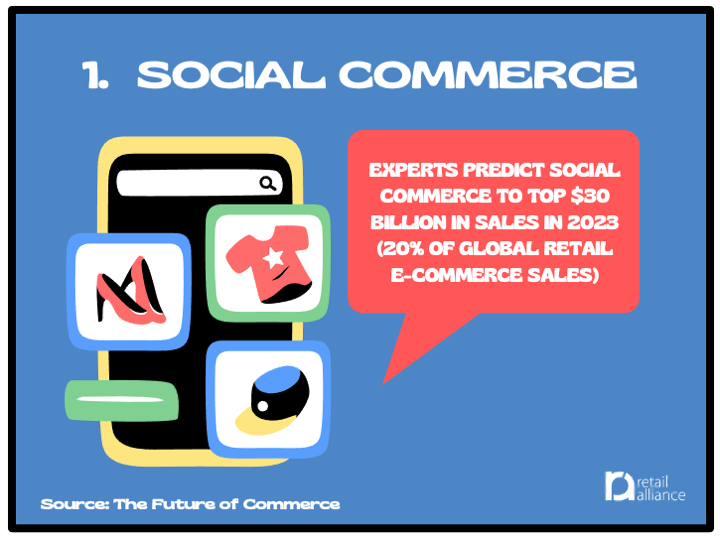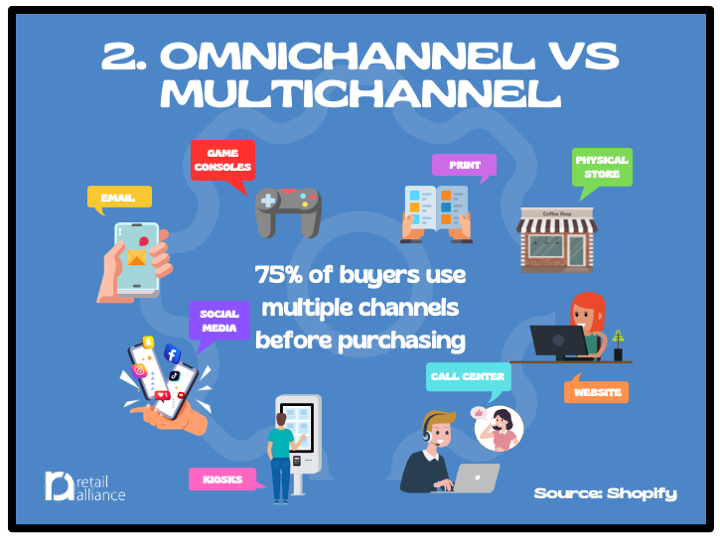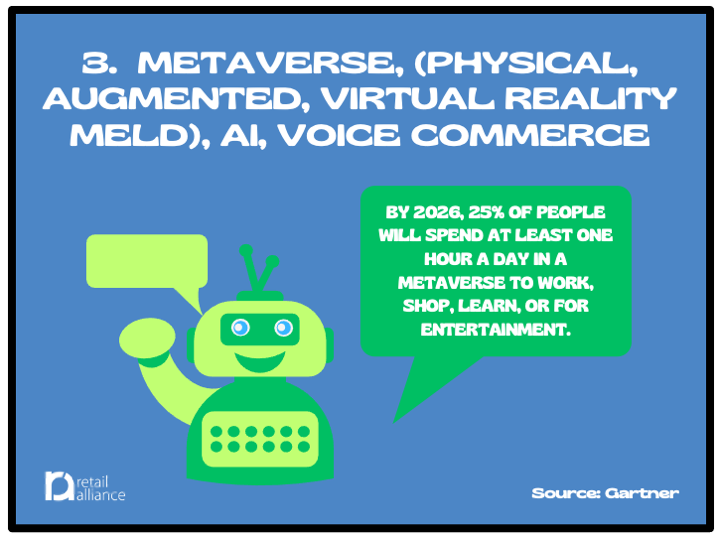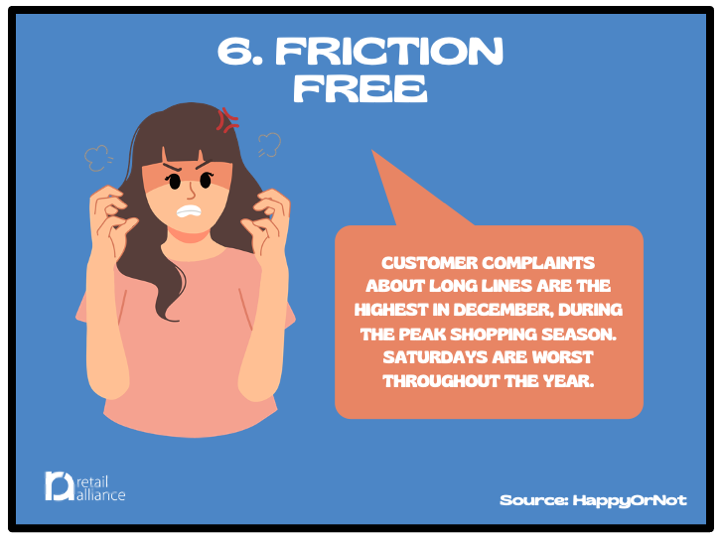Top 6 Retail Trends
The State of Retail 5 months in to 2023
Before we dive into the current and future retail trends, I believe it’s important to keep track of the retail economy as a whole and see how we are performing. We understand you don’t have much free time, so if you want to skip directly to the top 6 trends, feel free!
But for those with an extra couple of minutes… I’ve said it before, and I’ll say it again. Retail is not dying! Both physical and online retail are going strong. Even after digging out from COVID, dealing with soaring inflation, staff shortages, and supply chain disruption, the retail industry is poised for strong growth.
According to National Retail Federation, retail sales are forecast to grow between 4% and 6% in 2023 (between $5.13 trillion and $5.23 trillion).
In 2023, three-quarters of total US retail sales will happen offline, Forrester predicts. Forrester Research predicts total retail sale will reach $5.5 trillion by 2027 with online sales making up 30% of the market.
Retailers, take note of these 6 trends.
Consumers are engaging with brands in entirely new ways. They are changing their shopping patterns and are shopping across channels, expecting the same experience across them all. They expect you to deliver seamless transactions both online and instore, and frictionless shopping experiences. AI is bulldozing its way into the business world and metaverse is providing additional ways to reach consumers where they are.
- Social Commerce
It was only two decades ago that we were ONLY able to shop in-store. Big brands didn’t have our data either. One of the newer ways consumers are shopping is using social commerce, the definition of which basically is using a social platform for e-commerce sales.
Social shopping offers buyers supreme convenience and immediate gratification and is way more entertaining than scrolling endless product pages on a website.
Experts predict social commerce will top $30 billion in sales in 2023, making up 20% of global retail e-commerce sales. By 2027 it’s projected to drive $604 billion in sales. That’s an increase of more than $570 billion!
But not everyone is totally ok with buying on social. And it’s got nothing to do with your brand. Sharing financial information with social platforms is a sticking point, and some still don’t trust the platform, brand, or social media generally. It will take some time and increased security protocol before all consumers are comfortable social shopping.

- Omnichannel vs Multichannel
The two terms can be confusing, but the simple explanation is that multichannel retail is the distribution of products in multiple channels: for example, selling goods on a website as well as in a physical store.
Omnichannel retail, however, takes it further by considering the needs of customers and reaching them where they are, through all available channels in a seamless and unified brand experience.
Data from McKinsey shows omnichannel customers shop 1.7 times more than single-channel shoppers – they also spend more too.
Note: A new term is also being bandied around: Phygital. It seems similar to omnichannel in that it aims to provide a seamless purchasing experience but in addition to monetary benefits, it adds symbolic, social, and identity-based advantages. Keep an ear or eye out to see where they head with this one.

- Metaverse, (Physical, Augmented, Virtual Reality Meld), Ai, Voice Commerce
When I mentioned about meeting shoppers where they are, this also rolls over to the metaverse, artificial intelligence, and voice commerce.
For quite some time, video and augmented reality have played a pivotal role in e-commerce. Demo videos allow your potential customers to better understand your products, while AR gives consumers the ability to visualize your products in 3D.
Then… there’s the Metaverse, where physical, augmented, and virtual reality meld, creating a computer-generated environment where users can interact, purchase items, game, and have experiences like they would in the real world.
In addition, there’s also Artificial Intelligence (AI). I’m sure everyone has heard about ChatGPT. Some retailers are already using it to help people pick what to buy. It’s an artificial intelligence that learns as it asks the consumer questions about preferences.
National floral delivery service 1-800-Flowers has just adopted ChatGPT to write original Mother's Day poems. Customers can go onto their website and enter a style of poetry they want and some keywords and it generates a poem which can be printed and shared on social sites.
Also just announced, Google is going to be including artificial intelligence into 25 of its products, including its search engine and mail service.
Voice commerce is another type of ecommerce that uses artificial intelligence. It allows customers to make purchases using voice commands. This could be through a voice assistant such as Amazon's Alexa, Google Home, or a chatbot. Voice commerce requires some time and effort for a consumer to setup but can become effortless once done.
In my opinion, it feels like we are the backstory of the AI apocalypse where we are in a bubble of excitement, uncertainty, and, sorry to say, a little ignorance before the world is taken over by robots.
Technology has evolved so quickly that we’ve had no time to figure out the repercussions of this advancement. There are no boundaries or guardrails for the use of AI. One of the most respected voices in the AI field, Geoffrey Hinton, even quit Google where he worked for more than a decade and, speaking out about the risks of AI, has stated that a part of him now regrets his life work.
It’s a fascinating tool but one I am wary of and keeping a close eye on.

- Personalization
In the past, you might recall retail personalization practices were viewed as a “nice to have”. Today, customers expect it across the board. The advantages to you though are increased customer loyalty and brand engagement, which may positively impact your bottom line.
Personalization can be a balancing act of using personal data and the latest technology to understand and communicate your messaging with consumers without coming off as too invasive or creepy (basically knowing too much about them).
Think of all the Facebook ads you see. They are driven by what you are searching for on other channels (websites, other social media) and within Facebook itself.

- Experiential Retail
The last two are about providing a customer experience that is experiential and frictionless. To remain competitive, retailers need to shift their physical presence to places that surprise and delight rather than only serve as end-of-funnel sales transactions. Unless that’s what the consumer wants of course (eg BOPIS services).
The shift towards experiences rather than products will accelerate over the next few years and approach ‘tipping point’ in 2025, with customers expecting to see more creative, and health and games oriented in-store activities.
Omnichannel brands that use their online space to showcase the full range and their physical stores to surprise and delight may work for some but retailers need to truly understand customers’ needs and desires before making any major changes. For instance, my colleague Abby is on the cusp of both Gen Z Millennial groupings. She wants to physically shop but receive instant gratification. This won’t happen if there is only a limited selection in-store.

- Friction Free
Think about when you shop online. If you encounter a problem during the checkout process, do you just abandon your shopping cart?
Nowadays the shopping experience needs to be convenient and frictionless. Consumers want a seamless shopping experience, convenient returns, upgraded point-of-sale systems, and minimal wait times.

